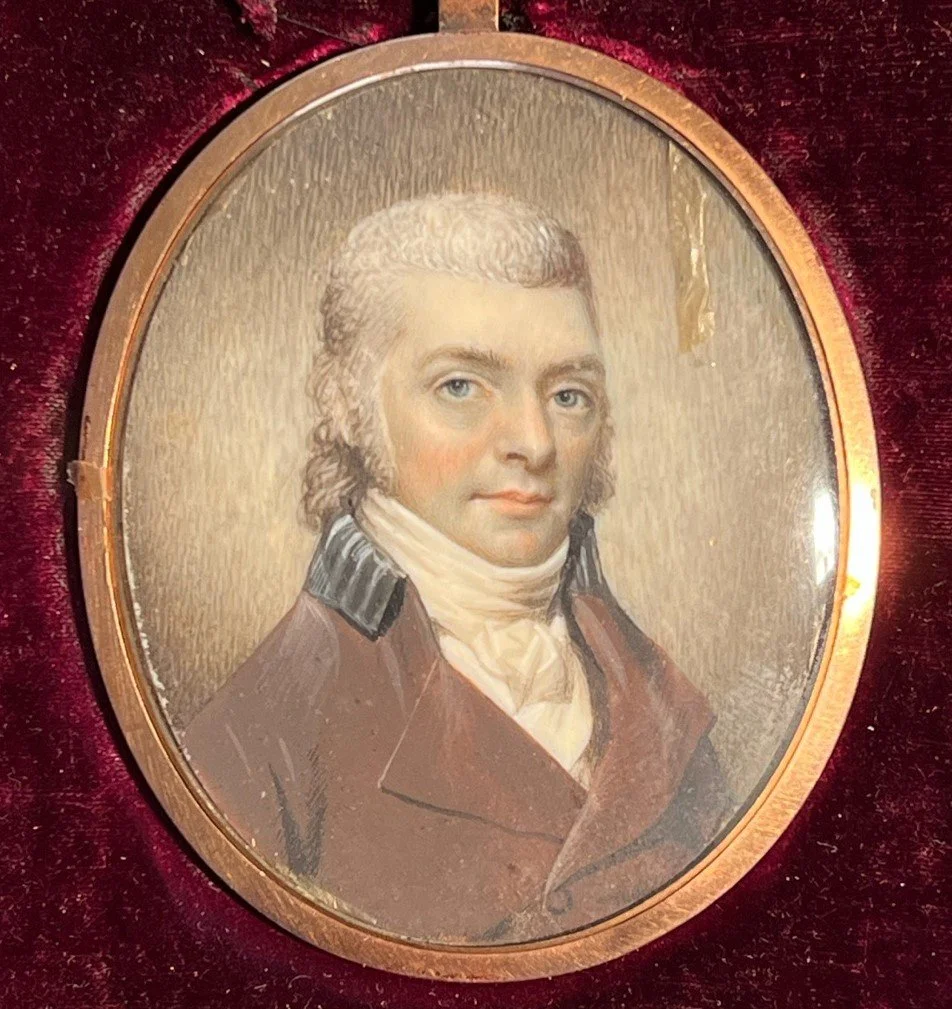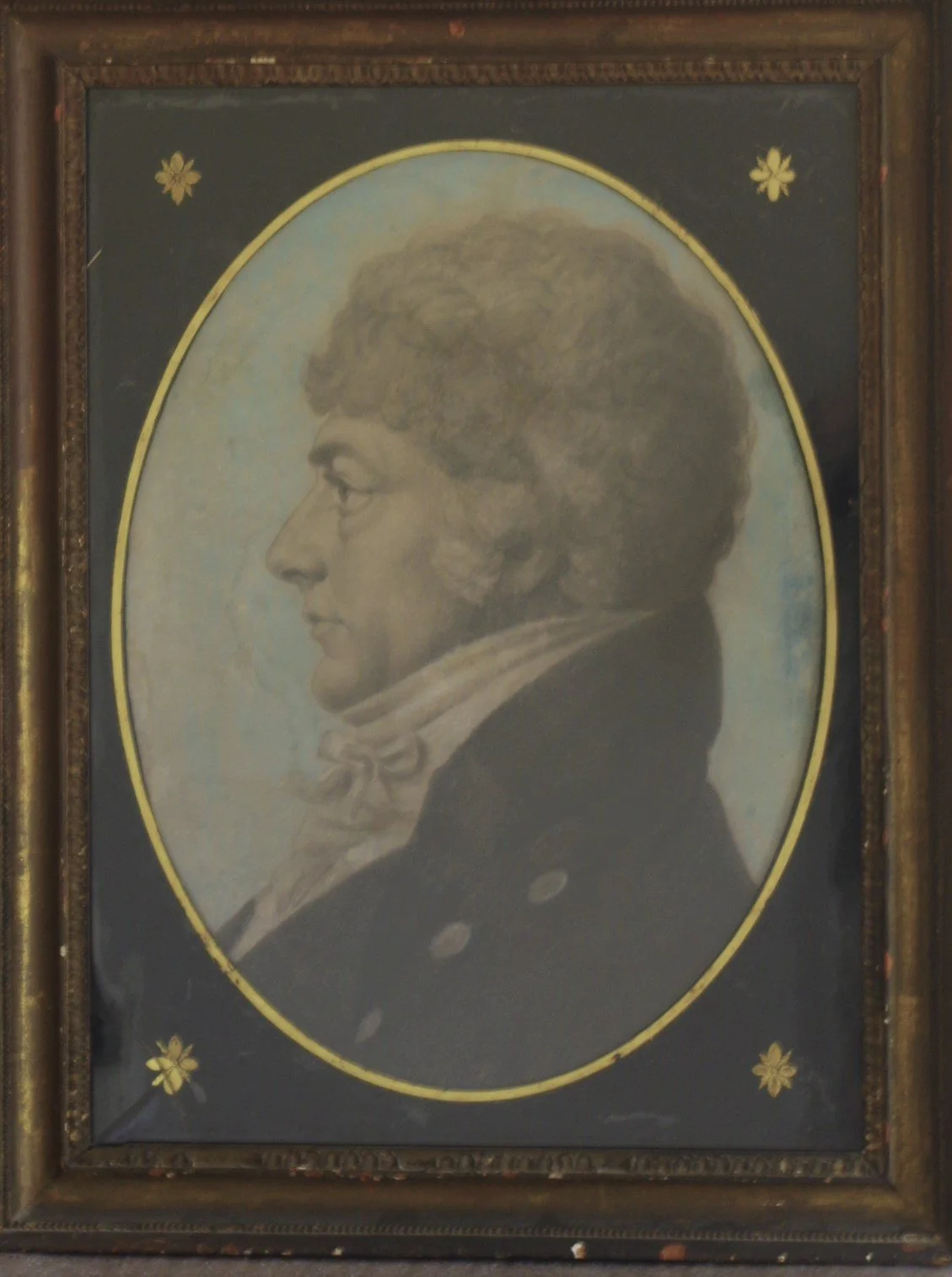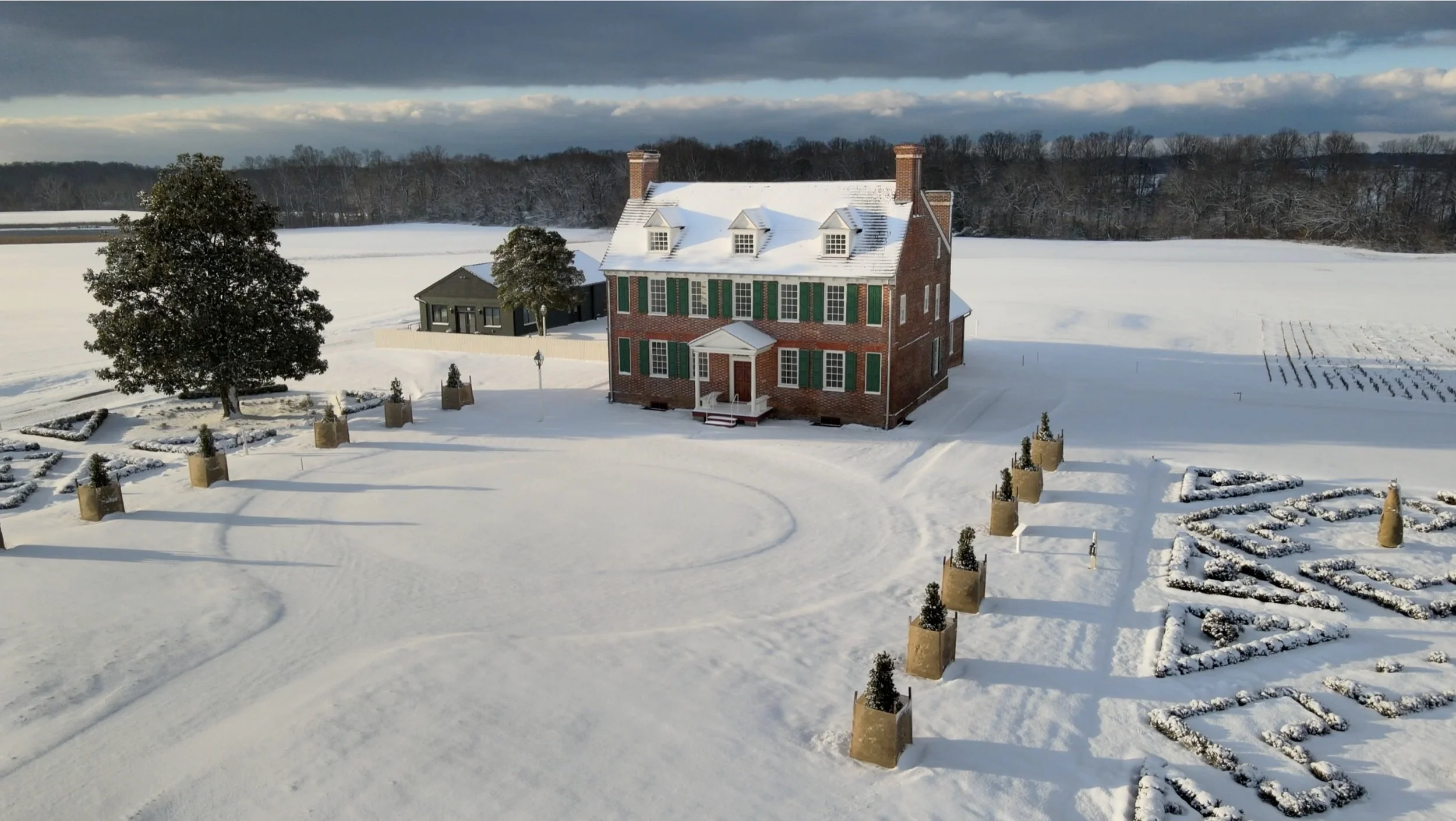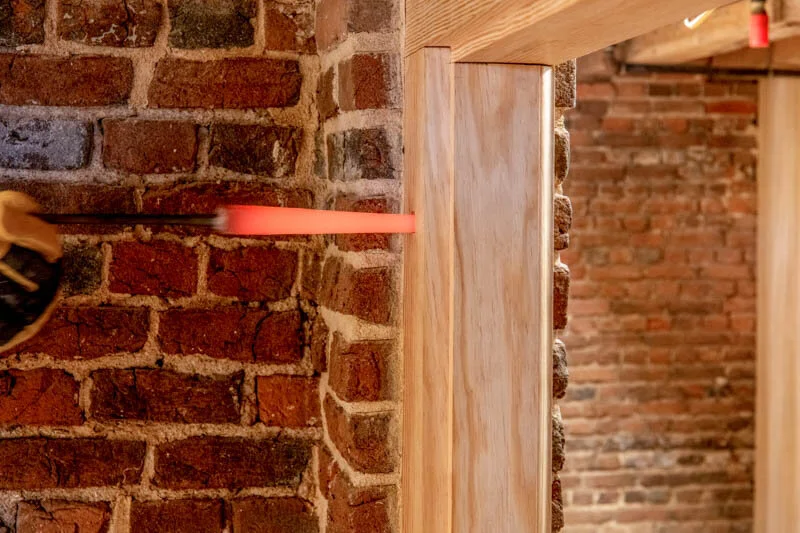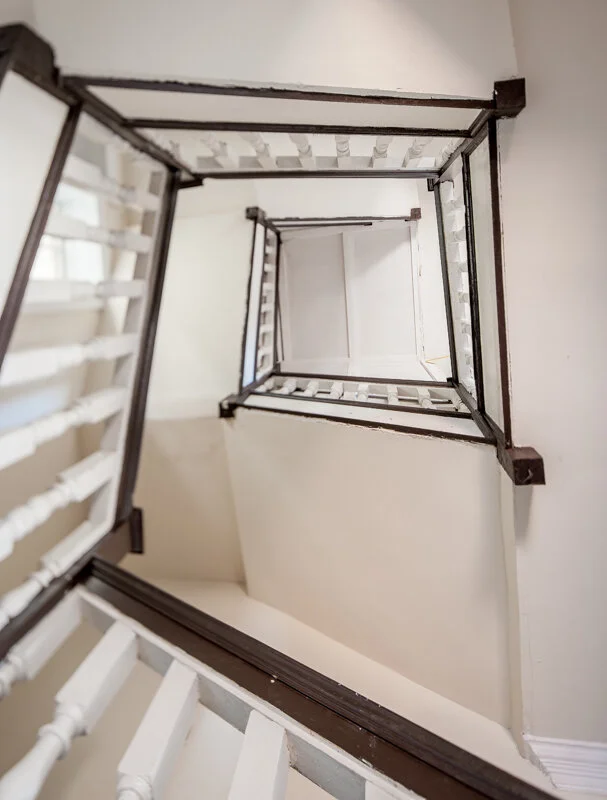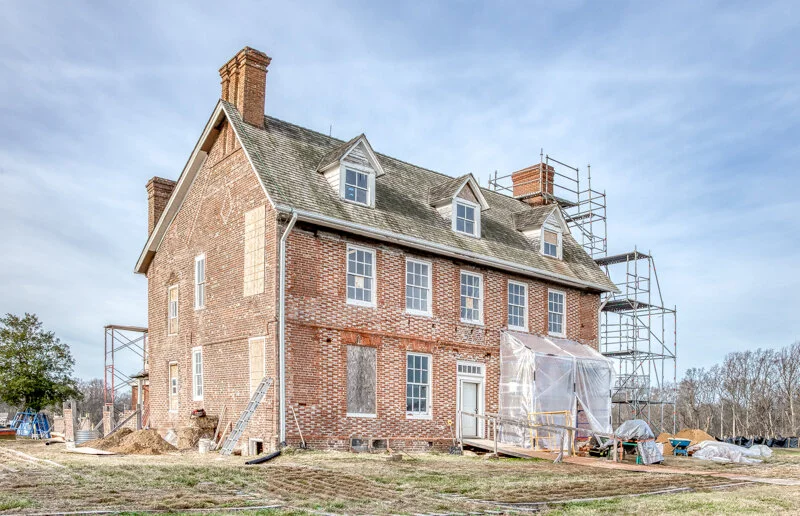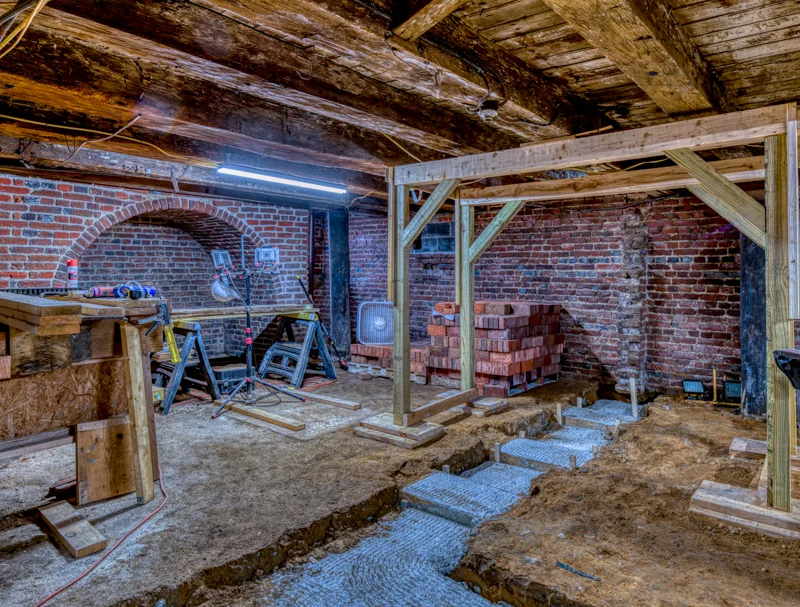In This Issue: Discovering William Hemsley, Jr. (1766-1825) in Art and Life, CPF Acquires the Hemsley-Forman Desk and Bookcase, and Summer in Review
/The image shows a mature man, poised and confident, with wide blue eyes and a mouth conveying just a hint of a smile. Hemsley's unhappy biography is at odds with the sitter’s sanguine expression.
Read MoreIn This Issue: Completion of the Ice House, and Imagining a Summer Meal with the Hemsleys. Also, Restoration Team Members Win Four Awards.
/The reconstruction of the ice house and wellhead. Restoration Team Members Win Four Awards. Summer entertaining at Cloverfields.
Read MoreIn This Edition, a New Art Acquisition, and Reconsidering the Attic
/A life in Profile: Acquiring the silhouette of Colonel Joseph Forman, Reconsidering the Attic, The Invention of Comfort.
Read MoreSpring at Cloverfields. Plus, How to Recreate a Historic Interior and Why Did the Hemsleys Have So Many Windsor Chairs?
/Video Tour of Cloverfields’ Spectacular Gardens in Bloom. Meet Rachel Lovett, Hired by CPF to Create a Furnishing Plan and Direct Collections. Estate Inventories: What we Can Learn From Them.
Read MoreRecreating a Missing Staircase
/The Discovery of a Missing Staircase. Plus Stairs and Status.
Read MoreRecreating a 1784 Terraced Garden: Historical Landscaping at Cloverfields
/Recreating a 1784 Terraced Garden: Historical Landscaping at Cloverfields.
Kimmel Studio Architects and McHale Landscaping collaborate on an impressive and challenging task: restoring the terraced gardens at Cloverfields. Planting nearly 700 boxwoods in December of 2020, the team transforms the barren winter space into an architectural and historical feat brimming with green. With research gathered from archaeological discoveries, ground-penetrating radar, and period writings, the Cloverfields restoration team establishes a garden that no one knew existed just below the surface.
Read MoreCloverfields as of March 2021: The Main House 1705 Dormer Restoration
/Restoring 1705 Dormers on the Main House
In this newsletter, Matt Culp, a carpenter at Lynbrook of Annapolis, restores the dormers on the front of the house using a 17th Century roofing style and original hardware. A dormer is a type of roof window that projects beyond the roof plane, often used to increase the usable space in a loft or attic and to add light.
Read MoreCloverfields as of February 2021: Recreating and Installing a Seventeenth-Century Door
/The complex restoration of Cloverfields’ seventeenth-century cellar door required collaboration across four disciplines: architectural history, blacksmithing, carpentry, and millworking. Architectural historian Willie Graham, blacksmith Peter Ross, carpenter Matt Culp (Lynbrook of Annapolis), and millwork specialist Jack (Jack O’Beales Custom Millworks) combined their expertise to construct a functional, period-specific door for the Cloverfields cellar.
Read MoreCloverfields as of January 2021: The 1769 Ashlar Stucco Wall Discovery at Cloverfields
/Preservation specialists are now working on the final details of the Cloverfields restoration, including finishes and paint. And they keep making some very interesting discoveries. A few months ago, the painters were working on the 1769 paint layer, when they noticed that the stucco had been scored to make it look like ashlar.
Read MoreCloverfields as of August 2020: An Extraordinary Find In The Eighteenth-Century Roof
/Learn about how the eighteenth-century roofers working at Cloverfields “swept the valley” and “combed the ridge” of the shingles they installed—and about how sometimes they did not, and instead, they used very thin shingles. These slender shingles and the way they were manipulated and installed constitute, according to historian Willie Graham, an “extraordinary find.”
Read MoreCloverfields as of April 2020: The 1890's Structure
/The Cloverfields house was originally built in 1705. We are restoring it to the year 1784, when Colonel William Hemsley lived in the house.
Although we choose to take back the house to the eighteenth century, the historians working at Cloverfields are going to great lengths to document other chapters of its history as well.
The twentieth century is one of these remarkable periods. During this era, the house was owned by the Callahan family. Thomas Callahan acquired the property in 1897, and the Callahan family owned it for more than a century.
In the video above, historian Sherri Marsh Johns, of Retrospect LLC, discusses the legacy of the Callahans, and their “preservationist ethic”:
Read MoreCloverfields as of March 2020: 1705 Staircase Preservation
/Lots of great things happening out at Cloverfields. This month we would like to focus on the staircase in the main house. It was part of the 1705 house, making it one of the oldest staircases still standing in Maryland. Ongoing efforts have been made by the Cloverfields restoration team to simultaneously keep the staircase as close to the original condition as possible while restoring it and strengthening the parts that have fallen into disrepair.
Read MoreCloverfields as of February 2020: On How An 18th-Century Beehive Oven Was Rebuilt
/In the video above, architectural historian Willie Graham tells us about Cloverfields’ reconstructed beehive oven. The oven is located in the also reconstructed back kitchen.
Read MoreCloverfields as of January 2020: Architects And Architecture Students Look Into Cloverfields' Opened Walls To Learn About 18th-Century Maryland Construction Methods
/In this newsletter Annapolis architect Devin Kimmel tells us about a tour of Cloverfields that took place in September of 2019. Organized by the Chesapeake Bay Chapter of the American Institute of Architects, the tour allowed architects of the Chesapeake Bay region and architecture students of the Anne Arundel County Community College to learn about 18th-century construction methods by looking into the opened walls of the three-centuries-old house.
Read MoreCloverfields as of December 2019: “A Model for Many Houses and Households” of the Chesapeake Bay Region
/“This house is a model for many houses and households of this region,” says decorative arts specialist Heather Ersts. Architectural historian Sherri Marsh Johns agrees: “Exactly, the archive that we are going to create with this is going to be so useful for preservationists’ projects where they are not going to have resources to go and do the in-depth analysis. They could look to Cloverfields and say, “this is a house of a certain age, a certain socioeconomic status,” and use it as a comparable and do a better interpretation than they otherwise would. So, the learning potential for other preservations is amazing.”
You can read the newsletter to find out what else they said.
Read MoreCloverfields as of November 2019: Cloverfields Was One Of First Houses Of The Eastern Shore To Use American Bond
/Experimenting With American Bond
When laying the first brick, the primary decision a mason has to make is whether to lay it as a stretcher or a header. The difference between the two depends on what part of the brick will be the face of the wall, or what part of the brick you will see. When a row is composed of stretchers, you will see the longer side of the bricks. Alternatively, when a row is composed of headers you will see the ends or “heads” of the bricks.
Once he laid the stretcher or the header, the mason has to decide how to arrange the next brick, or what pattern to follow. Some conventional designs include the English, Flemish, and American bond. If the mason alternates layers of headers and stretchers, he will create an English bond. If he decides to lay headers and stretchers alternately within each course, he will create a Flemish bond. The American bond is the easiest to lay. The mason lays mostly stretchers and only puts headers every fifth or sixth course.
The eighteenth-century masons that laid the bricks at the Cloverfields house used a combination of bonds. Some sections are Flemish bond, and some others are a very early version of the American bond.
Read MoreCloverfields as of October 2019: Jack Abeel Transforms Trees Into Shingles
/This newsletter features Jack Abeel of Jack Abeel Custom Millwork. The company specializes in millwork for historic buildings. Jack has more than 30 years of experience, and Colonial Williamsburg is one of his clients. The Cloverfields Preservation Foundation hired him to create the shingles for the roof of the house.
In the video, Jack Abeel explains how he transforms trees into shingles. He first finds the appropriate trees. In this case, he found the trees in New Jersey. Jack points to some logs and tell us where they came from: “These are some Atlantic white cedar logs. They came from New Jersey, the pad, barons, and bogs south on the eastern parts of New Jersey.” The logs traveled from New Jersey to Virginia, where Jack unloaded them. When we interviewed him, he had just received the logs. “I just got them on Sunday, unloaded them in the rain and snow.”
Read MoreCloverfields as of September 2019: Making Sure Cloverfields Remains Structurally Sound
/In this newsletter, project manager John Gaver of Lynbrook of Annapolis explains the steps that he is taking to repair the structure of the Cloverfields house. He tells us how he worked as a team with structural engineer Peter McConaughy of McCon Engineering Inc. to devise a solution that preserves the eighteenth-century appearance of the house while making sure it remains structurally sound.
We are taking these same measures on all aspects of the Cloverfields restoration. The electric lighting, outlets, HVAC registers, and fire suppression systems will all be concealed as much as possible.
Read MoreCloverfields as of August 2019: Archaeologist Jason Tyler, RPA, Discusses The 300-Year Story Of The Back Kitchen
/The 1784 version of the Cloverfields house had a service wing off the rear of the main house. In the video featured in this newsletter, Jason Tyler, RPA, discusses the history of this wing, since the original building of the house in the year 1705 up to now.
Read More

